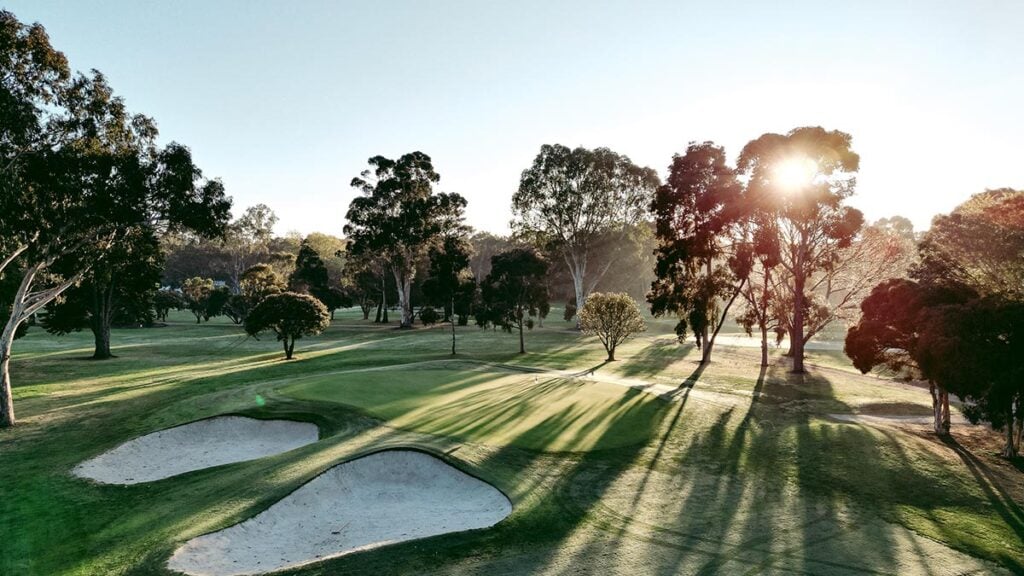Brad Faxon always seemed to be two different players, each on parallel but dramatically divergent paths that never seemed to intersect. One was easy, capable of wondrous eye-hand artistry. The other had a dogged, fitful struggle whose triumphs put him in the conversation for best bad ball-striker in golf history.
With short shots, and especially with the putter, the lanky New Englander cut a graceful figure whose movements were relaxed and confident. His rhythmic stroke made him a perennial PGA Tour statistical leader on the greens and one of the best putters the game has ever seen.
With long shots, however, especially the driver, Faxon’s movements took on an artificiality that undermined his athleticism. His swing was somewhat cramped and disconnected compared to the best ball-strikers. In his more than two decades on the PGA Tour, Faxon finished inside the top 100 in driving accuracy only once and never in greens in regulation.
The dichotomy is one that Faxon has long pondered, his reflections informing the wisdom he now imparts as Rory McIlroy’s putting coach and his commentary as an analyst for NBC and Golf Channel.
“I like looking back, even the unsolved mysteries,” the 64-year-old says while sharing a couch with his dogs Vita and Flo in the living room of his home in Palm Beach Gardens. “The ups and downs and trying to figure it out, it’s a big part of what I love about golf.”
He’s come to realize that his comfort and genius on and around the greens was shaped by the intuitive and joyful approach he brought to all sports as a boy—revel in the fun, closely observe the best players, emulate them in a way that becomes your own.
At 14, after giving up his favorite sport, hockey, to focus more on golf, Faxon took up table tennis as a winter sport. Although he had played only garage Ping-Pong with his friends, once exposed to advanced play, he excelled with lightning speed. Within a year, right after winning his first of three Rhode Island Junior golf championships, he took the state 17-and-under table tennis title, a combination that got him into Sports Illustrated’s Faces in the Crowd and into the U.S. Open of Table Tennis.
Faxon’s full swing had an extra developmental element that disrupted the purity of that process. “My dad was a good player, but he never tried to coach me,” Faxon says. “The one thing he did tell me when I started out was to keep my head down—never look up, never watch the ball, and my head would stay down for an extraordinary amount of time.” The remnants of that exaggerated move would lead to inefficient compensations that with a driver made him close to the opposite of what he was with a putter.
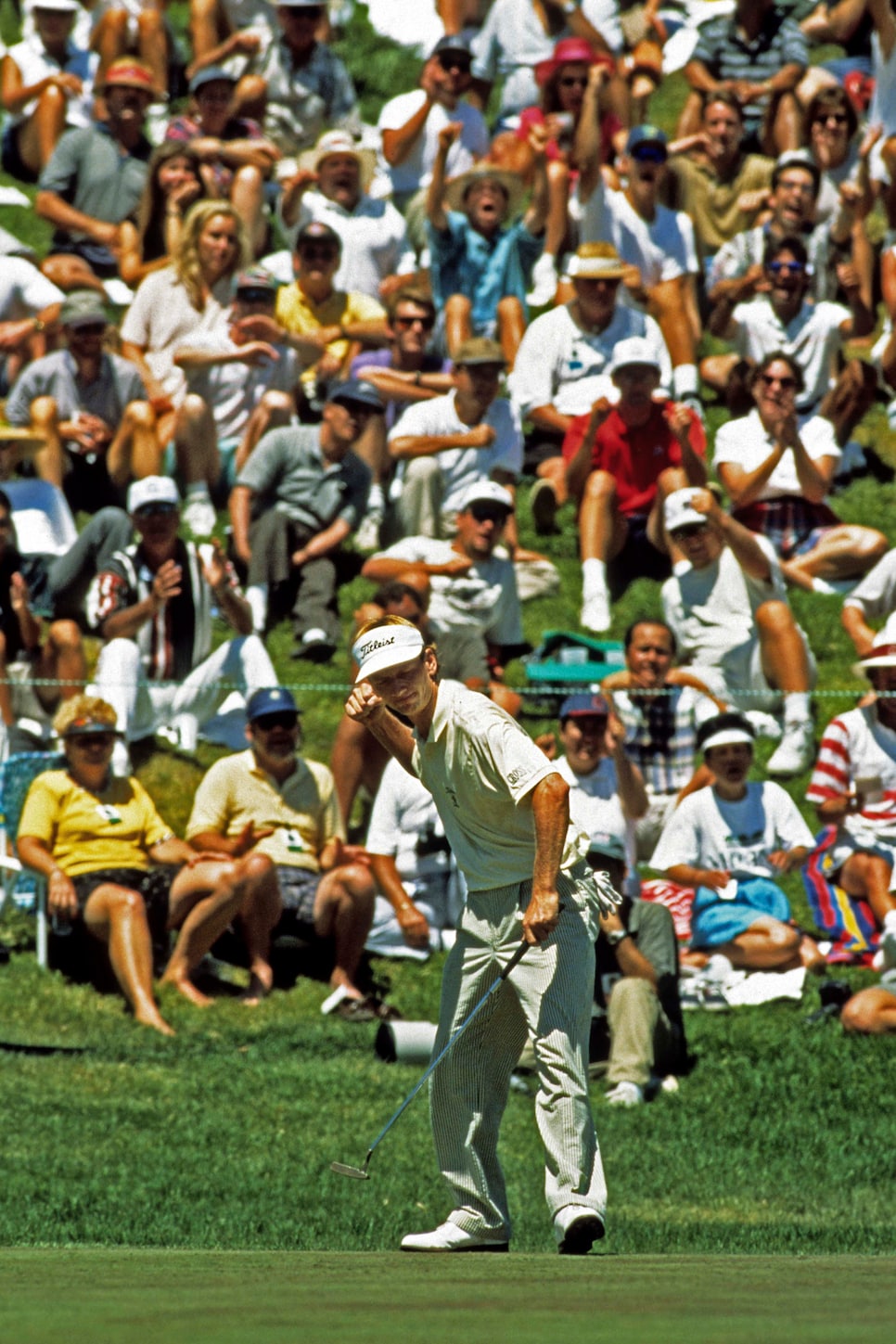
OUT OF CHARACTER: In his stellar round at Riviera, Faxon actually missed two five-foot putts.
Montana Pritchard/PGA of America
MORE: Brad Faxon says this modern putting trend can cost golfers feel
Such a duality is not unusual at golf’s top level. Many touring pros need to be great at one area of the game to make up for weakness in the other. The strong part isn’t bothered by a lot of thought while the inferior part is accompanied by a great deal of analysis. Ben Crenshaw, whose putter was intrepid but whose long game became inconsistent when he began to make swing changes, always contended he played his best golf as a teenager, when, he said, “I didn’t think, I just did.”
Not that Faxon didn’t have a distinguished career. Along with the 1993 Australian Open, he won eight times on the PGA Tour, his last victory coming in the 2005 Buick Classic at age 45, where he closed with a 61. He revered the majors, early in his career always traveling to the U.K. to try to make it through qualifiers for the The Open, but in the 66 majors he played, he posted only four top-10 finishes.
The best of those was fifth at the 1995 PGA Championship at Riviera, won by Steve Elkington in a playoff over Colin Montgomerie. There Faxon’s parallel paths finally merged in harmony to the point that his ball-striking was actually better than his putting.
In the final round, Faxon shot 28-35—63, tying the major record for nine-hole score as well as the lowest 18-hole score. That day Faxon missed only two fairways and hit the first 17 greens in regulation. By dramatically holing a 12-foot putt before the packed amphitheater behind Riviera’s 18th green, Faxon clinched the last automatic spot on the U.S. Ryder Cup team in the last qualifying tournament.
“It’s the greatest thing I’ve ever accomplished in golf,” he says. “Everything you play the game for, in that one round, I did. The best I ever executed the lessons I’ve learned.”
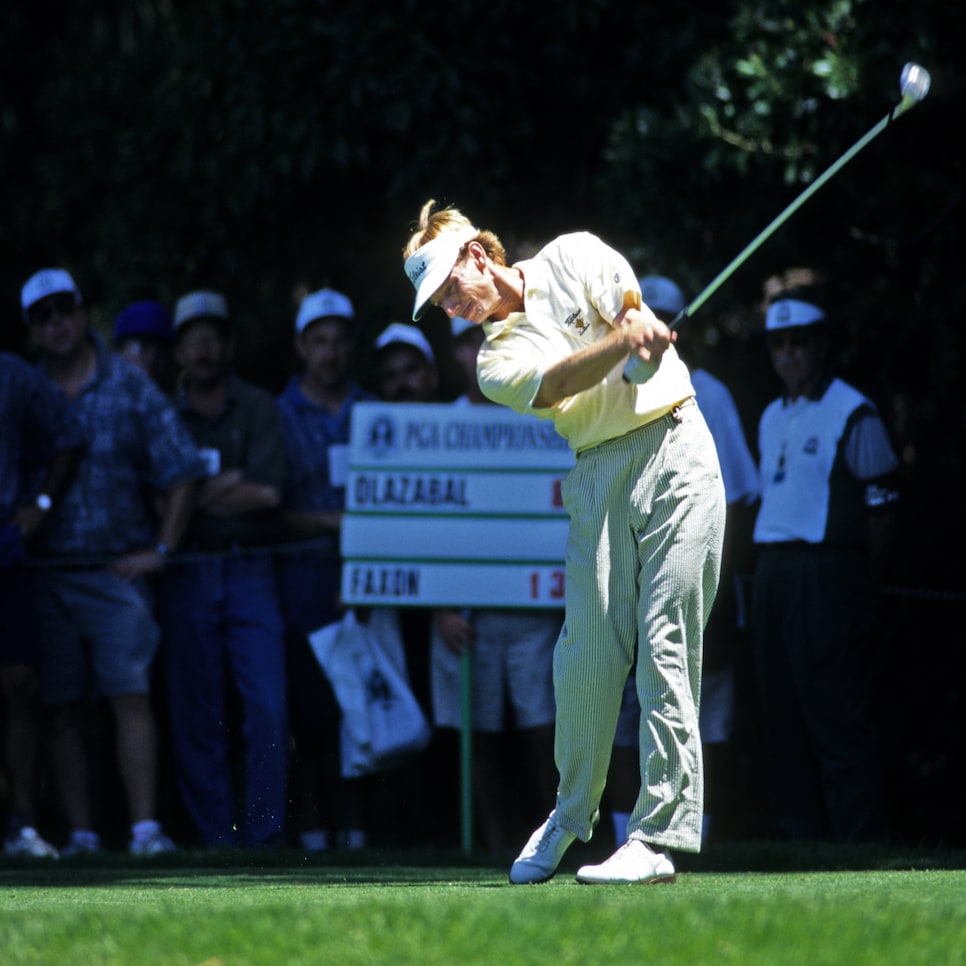
COME TOGETHER: On Sunday at the 1995 PGA, Faxon shot a 63 with all elements of his game firing.
Montana Pritchard
It was a lot, and in some ways, too much. “I was and remain immensely curious,” says Faxon, who transitioned from doer to thinker in his full swing after turning professional in 1983. He began working with David Leadbetter, who the year before had given Faxon a quick and simple lesson at college tournament, which led to improvements that helped the Furman senior win the Haskins Award as the nation’s best collegiate player.
“That’s when I started investigating my golf swing,” Faxon says with emphasis. “I thought the secret back then would have been to learn the mechanics of my golf swing, but it wasn’t good for me to do that. It changed my mentality about the game. I went down a deep, dark path.”
Such duality is not unusual … Many touring pros need to be great at one area of the game to make up for weakness in the other.
That path started when Faxon began working to fix the consequences of that first tip from his father. “The head-down thing restricted my turn and got me tilting and leaning back from the target on the downswing,” he says. “That opened the face and forced me to have to roll my forearms to square the clubface. I didn’t like the way that looked, not having that good extension so many great players had and for years tried to get that forearm rotation out of my swing.”
The effort caused Faxon to lose his clubface awareness, and in his second full season in 1985 he was stricken with the driver yips. “It was a horrible feeling,” he says, pantomiming a severe shudder. “I hate even talking about it. I would wake up in the middle of the night from a driver nightmare with my forearms aching from all the tension.”
Though the two have remained good friends for more than 40 years, Faxon soon stopped working regularly with Leadbetter and began, in his words, “to take more lessons from more different teachers than any tour pro ever.” Faxon battled tenaciously to stay on the tour, in large part with his short game and putting, and earned his first victory at the 1991 Buick Open, but serious scar tissue remained. In his third win, the 1992 International, Faxon was so fearful of spraying his driver that he didn’t use a tee for the entire 72 holes, opting for low bullets with the big dog off the deck that cost distance but stayed findable.
More From the best i ever did  Golf Digest Logo The Best I Ever Did: David Leadbetter
Golf Digest Logo The Best I Ever Did: David Leadbetter 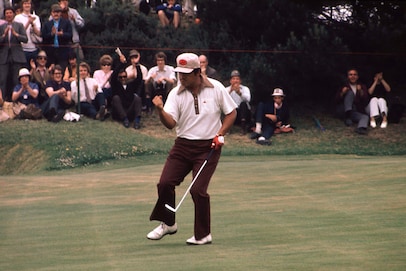 Golf Digest Logo The Best I Ever Did: Lee Trevino
Golf Digest Logo The Best I Ever Did: Lee Trevino
Faxon reached a career best of 11th in the world ranking in 1997. When he arrived at Riviera in 1995, several months of consistent golf had gotten him to 14th in the Ryder Cup point standings, meaning he would need a high finish and some luck to nab the 10th and last automatic qualifying spot. “I knew Lanny [Wadkins] wasn’t going to pick me because I was a rookie and hadn’t won enough,” says Faxon of the U.S. captain that year. “But I badly wanted to make that team and got myself very focused.”
That week at Riviera, before a practice round, Faxon happened to get a look from Leadbetter, who suggested Faxon raise his hands higher at address. The change created a wider and more loaded turn on his backswing, which produced a shallower downswing and fuller release without the hand manipulation that was often Faxon’s undoing.
“It helped me feel that at the top of the swing I had more time,” Faxon says. “I had an incredible week tee to green for me. I was able to curve the ball in all directions at will. I felt free, with little fear off the tee, and I hit a lot of fairways. It was how I wish I could have played all the time.”
In such a state, Faxon found Riviera’s Golden Age design a source of shot-making inspiration, but Riviera’s greens that year were in poor condition, and too many of his well-struck mid-range putts were frustratingly not falling. Faxon’s first three rounds of 70-67-71 had him five under par, 11 strokes behind leader Ernie Els and tied for 21st place. However, he was only three strokes out of 10th place.
That’s when Faxon’s longtime sports psychologist Bob Rotella weighed in. “The night before the last round, Bob took me by the shoulders and in a tone that really got my attention said that tomorrow would be a meaningful round of golf,” Faxon remembers. “He was looking me in the eye and telling me, ‘Let yourself do this. Don’t stop yourself from doing this.’ When I got up on Sunday, I could still feel the weight of what he said and how he said it.”
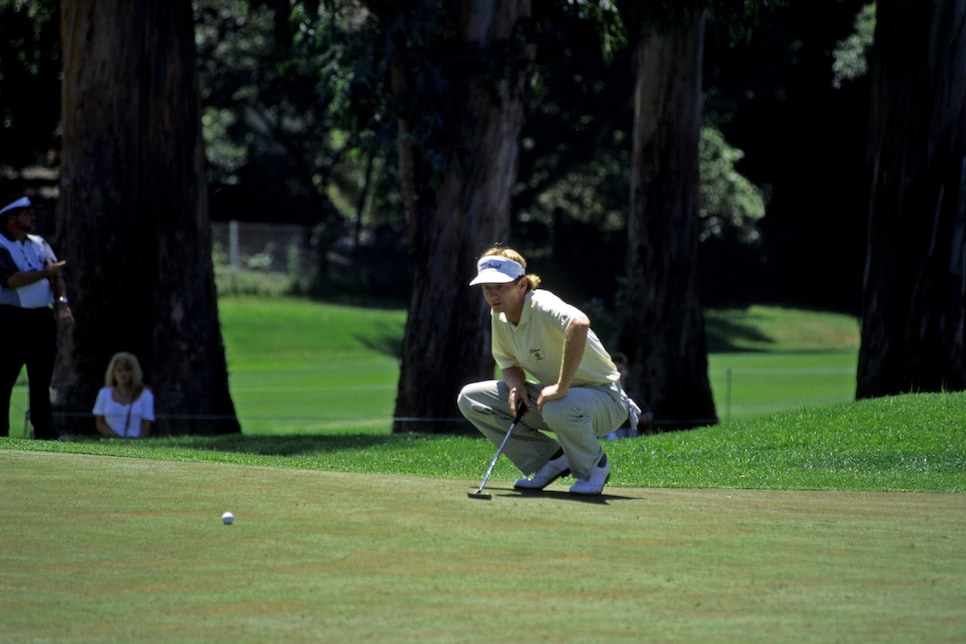
DIALED IN: Faxon missed just two fairways and hit the first 17 greens in regulation that Sunday at the PGA, en route to tying the major record for lowest nine-hole (29) and 18-hole score (63).
Montana Pritchard/PGA of America
On Riviera’s gettable par-5 first hole, Faxon began with a big drive and a 5-iron to 18 feet, which he rolled in for eagle. Splitting fairways and flagging his irons, he followed with birdie putts of five, 45, 25 and three feet. On the par-4 eighth hole, he missed a five-footer for another but bounced back with a swinging 25-footer for birdie on the ninth to go out in seven under. Suddenly, he was within three of the lead.
Faxon heard murmurings of 59 and even winning, and he slipped out of the zone at the short 10th hole, failing to stiff an easy-for-him pitch and missing a 12-footer. He birdied the par-5 11th, but on the 12th missed another five-footer for birdie. Then on the 15th, he three-putted from inside 20 feet for his only bogey when his downhill second putt was sent off course by a spike mark.
“That was discouraging, and I momentarily counted four lost strokes,” Faxon says, “but I remembered everything I had made and got back into the moment. Because I wasn’t worried about my swing technique, which would cause me doubt and stress under pressure, that was easier to do. On 16, a par 3 I love, I flushed a 7-iron right over the flag and made the 18-footer.”
After a par on 17, Faxon came to the final hole knowing he would need a par to have a chance to make the Ryder Cup. For the first time all day, he reverted to his habit of leaning back and hit his only poor drive of the day, a pop up off the toe that expired in the right rough and forced a punch out short of the green. He stuck his 8-iron chip well, but it ran farther than he thought it would, leaving a right-to-left 12-footer.
“I had to make that putt,” Faxon says. “I embraced the pressure, even though that can put you on a mental tightrope because when you face an ultimate test and pass it, you don’t want that to feel meaningless. Everything slowed down. The ball and the sweet spot on my putter just of sort of melded together, and I poured it in.”
His playing partner that day, Jose Maria Olazabal, embraced Faxon. “He told me ‘That was the greatest round of golf I’ve ever watched.’ For a guy I’ve always respected so much to say that, it was the coolest thing.”
As much as reliving the round brings Faxon joy, it also leaves him slightly wistful. With his short game and putting, what heights could he have reached had he been able to produce such high-quality full shots more often? What if he had avoided the deep dark path? Asked if he thinks he might have been a better player with no instruction, he pauses and says pensively, “Probably.”
Then Faxon chuckles at the unsolvable mystery.
“I mean, part of me thinks I was an overachiever, and part of me thinks I was an underachiever.”
In the case for the latter, Riviera in 1995 is Exhibit A.
This article was originally published on golfdigest.com


